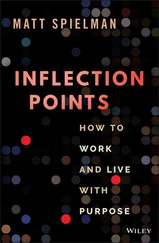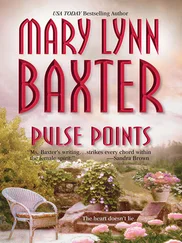
One of the best books I read during my presidency was Theodore Rex , Edmund Morris’s biography of Teddy Roosevelt. At one point near the end of his eventful tenure, Roosevelt exclaimed, “I knew there would be a blizzard when I went out.”
I know what he meant. The period between September and December 2008 was the most intense, turbulent, decision-packed stretch since those same months in 2001. Because the crisis arose so late in my administration, I wouldn’t be in the White House to see the impact of most of the decisions I made. Fortunately, by the time I left in January 2009, the measures we had taken had stabilized the financial system. The threat of a systemic collapse had passed. Once-frozen credit markets had begun flowing again. While the world still faced serious economic insecurity, the panic mentality was gone.
The following year brought a mixed picture. The stock market fell during the first two months of 2009 but ended the year up more than 19 percent. As banks rebuilt their balance sheets, they began to redeem government-owned shares. By the fall of 2010, the vast majority of the capital the Treasury injected into banks had been repaid. As the economy regains strength, more of that money will be repaid, plus dividends. A program derided for its costs could potentially end up making money for American taxpayers.
I’ve often reflected on whether we could have seen the financial crisis coming. In some respects, we did. We recognized the danger posed by Fannie and Freddie, and we repeatedly called on Congress to authorize stronger oversight and limit the size of their portfolios. We also understood the need for a new approach to regulation. In early 2008, Hank proposed a blueprint for a modernized regulatory structure that strengthened oversight of the financial sector and gave the government greater authority to wind down failing firms. Yet my administration and the regulators underestimated the extent of the risks taken by Wall Street. The ratings agencies created a false sense of security by blessing shaky assets. Financial firms built up too much leverage and hid some exposure with off–balance sheet accounting. Many new products were so complex that even their creators didn’t fully understand them. For all these reasons, we were blindsided by a financial crisis that had been more than a decade in the making.
One of the questions I’m asked most often is how to avoid another financial crisis. My first answer is that I’m not sure we’re out of the woods on this one yet. Financial institutions around the world are still unwinding their leverage, and governments are saddled with too much debt. To fully recover, the federal government must improve its long-term fiscal position by reducing spending, addressing the unfunded liabilities in Social Security and Medicare, and creating the conditions for the private sector—especially small businesses—to generate new jobs.
Once the economy is on firm footing, Fannie and Freddie should be converted into private companies that compete in the mortgage market on a level playing field with other firms. Banks should be required to meet sensible capital requirements to prevent overleveraging. The credit-rating agencies need to reevaluate their model for analyzing complex financial assets. And boards of directors must put an end to compensation packages that create the wrong incentives and reward executives for failure.
At the same time, we must be careful not to overcorrect. Overregulation slows investment, stifles innovation, and discourages entrepreneurship. The government should unwind its involvement in the banking, auto, and insurance sectors. As it addresses financial regulation, Congress should not infringe on the Federal Reserve’s independence in conducting monetary policy. And the financial crisis should not become an excuse to raise taxes, which would only undermine the economic growth required to regain our strength.
Above all, our country must maintain our faith in free markets, free enterprise, and free trade. Free markets have made America a land of opportunity and, over time, helped raise the standard of living for successive generations. Abroad, free markets have transformed struggling nations into economic powers and lifted hundreds of millions of people out of poverty. Democratic capitalism, while imperfect and in need of rational oversight, is by far the most successful economic model ever devised.

The nature of the presidency is that sometimes you don’t choose which challenges come to your desk. You do decide how to respond. In the final days of my administration, I gathered my economic advisers for a last briefing in the Oval Office. I had assembled a strong, experienced team that was capable of adapting to the unexpected and making sound recommendations. We had done what we believed was necessary, knowing it would not always be popular. For some in our country, TARP had become a four-letter word. I believe it helped spare the American people from an economic disaster of historic proportions. The government made clear it would not let the economy fail, and the second Great Depression that Ben Bernanke warned about did not happen.
As I looked into the tired faces of the men and women of my economic team, I thought about all my administration had been through. Every day for eight years, we had done our best. We had given the job our all. And through every trial, we had been honored to serve the nation we love.
*Many small business owners are sole proprietorships, limited partnerships, or Subchapter-S Corporations, meaning they pay their business taxes at the individual income tax rates.
**The top 1 percent of taxpayers went from paying 38.4 percent of overall taxes to 39.1 percent, while the bottom 50 percent saw their share decrease from 3.4 percent to 3.1 percent.
***Debt-to-GDP is the average measured at the end of each calendar year. Average spending, taxes, and deficits are calculated for fiscal years, which end September 30. Thus, the average of four or eight fiscal years excludes the effects of any policies implemented in the last three months and twenty days of a presidential term. If full-year FY ’09 numbers were included in my averages, they would be: spending = 20.2%; taxes = 17.5%; deficits = 2.7%. This would incorporate spending for TARP and the initial auto loans as projected by Congressional Budget Office in January 2009. These figures overstate the additional spending, since the vast majority of TARP funding will be paid back.
****The price was later renegotiated to ten dollars per share.
*****The United States, Japan, Germany, Great Britain, France, Italy, and Canada.
******Responsibility for shaping the deal fell to Dan Price, a tenacious lawyer on the NSC staff, and Dave McCormick, the capable undersecretary of the treasury for international affairs.

 began Tuesday, January 20, 2009, the same way I had started every day for the past eight years: I read the Bible. One of the passages that final day was Psalm 18:2—“The Lord is my rock, my fortress and my deliverer; my God is my rock, in whom I take refuge.” Amen.
began Tuesday, January 20, 2009, the same way I had started every day for the past eight years: I read the Bible. One of the passages that final day was Psalm 18:2—“The Lord is my rock, my fortress and my deliverer; my God is my rock, in whom I take refuge.” Amen.
A little before 7:00 a.m., I took the elevator to the ground floor of the White House, walked down the Colonnade, and opened the glass-paneled door to the Oval Office for the last time. Josh Bolten was waiting inside. He greeted me with the same words he’d used every day as my chief of staff: “Mr. President, thank you for the privilege of serving.”
Читать дальше



 began Tuesday, January 20, 2009, the same way I had started every day for the past eight years: I read the Bible. One of the passages that final day was Psalm 18:2—“The Lord is my rock, my fortress and my deliverer; my God is my rock, in whom I take refuge.” Amen.
began Tuesday, January 20, 2009, the same way I had started every day for the past eight years: I read the Bible. One of the passages that final day was Psalm 18:2—“The Lord is my rock, my fortress and my deliverer; my God is my rock, in whom I take refuge.” Amen.









